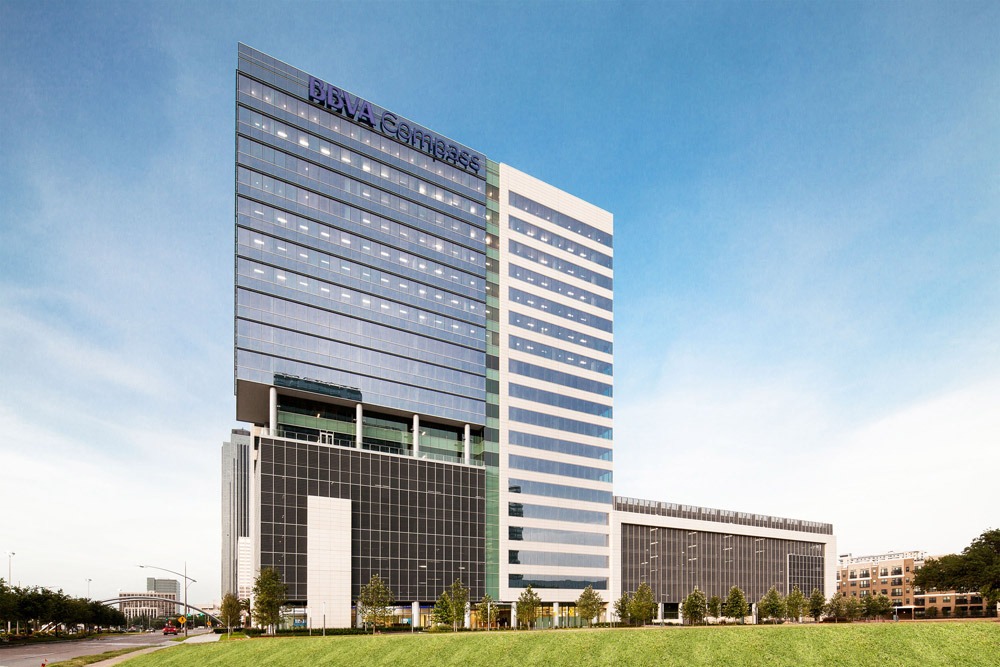
2015 was a dynamic year for commercial real estate, and there were plenty of trends and patterns that kept CRE experts on their toes. The oil slump’s weight shifted the scales in certain submarkets and helped dealmakers push into the health care and petrochemical spaces. Given the ongoing oil slump and a record-setting amount of sublease space on the market, 2016 is pegged to be a difficult year in CRE. However, industrial and retail deals may serve as a bright spot.
This is part one of two in the HBJ’s Top 10 biggest CRE stories of 2015.
1. International investors are still bullish on Houston. Some of the biggest deals in 2015 involved international investors. Most notably, BBVA Compass Plaza at 2200 Post Oak Boulevard was purchased by a Spain-based private investor for a record-setting price. The building sold for roughly $442 million, or $527 per square foot. That set a new Houston record for per-square-foot pricing, according to Realty News Report. And in April, one of downtown’s most iconic buildings, 1000 Main, was purchased by Germany-based Union Investment Real Estate GmbH for approximately $440 million, or $525 per square foot.
Strategic Capital, the U.S.-based investment platform of China State Construction Engineering Corp., the world’s largest construction and real estate conglomerate, made its entry into the Texas market with the purchase of Broadstone Post Oak. The five-story, Class A+ apartment complex was sold in July for an undisclosed amount. And Houston-based HCC Insurance Holdings Inc. (NYSE: HCC), a 40-year-old local company, was bought by Japan-based Tokio Marine Holdings for $7.5 billion.
2. Health care construction ramped up big time in 2015. There is almost $5 billion in development underway or planned for Houston’s health care sector. A big chunk of that is a $1.5 billion 30-acre research campus in the Texas Medical Center dubbed TMC3. In addition, the University of Texas bought more than 300 acres for a major Houston expansion. The expansion plans have been criticized by a Texas legislator, and some UH law professors argue that UT’s plan violates state law, according to the Houston Chronicle.
3. Gone are the days of enclosed retail developments. In 2015, it was all about open-air. One of the best examples of Houston’s newfound love for outdoor retail is the River Oaks District, which celebrated its grand opening in October. The development has since changed Houston’s retail scene by attracting a swath of ultra-luxe, international retailers to Houston. The district has served as a huge pull for new business players entering the Houston market.
As of October, the River Oaks District was 85 percent leased, and 95 percent of those retailers were new to Houston. And San Jacinto Mall was bought in July by an affiliated partnership of Fidelis Realty Partners. The 1.2 million square foot mall, which sits on 107 acres of land, will be redeveloped into a 1 million-square-foot open-air center.
And Fort Worth-based Trademark Property Co. is moving forward on phase I of its multimillion-dollar renovation to the 296,000 square feet of retail property it manages in the open-air Rice Village area.
4. Sublease space hit record highs due to oil slump, and the Energy Corridor felt the brunt of the hurt. Sublease space, or space put back on the market by a tenant and in which the tenant acts as the landlord, is typically less-than-ideal space that can be had for a steal. As of October, sublease space made up a record-setting 4 percent of the total office inventory in Houston. The last time there was that much sublease space in the market, it was 2003.
With oil prices staying low, the Energy Corridor’s office market has been hardest hit, with about 3 million square feet of sublease space available. A lot of the sublease space that hit the market in 2015 was essentially brand new, due to energy companies not being able to occupy the amount of space they leased out in earlier years. The influx of sublease space is also affecting the Galleria submarket, too, which houses more energy companies than you might think.
5. Petrochemical expansions have been booming throughout much of 2015. There are more than $1 billion in petrochemical projects and expansions taking place throughout the greater Houston area. Houston-based Enterprise Product Partners LP (NYSE: EPD) announced in January that it would expand a natural gas liquids pipeline near Houston. Earlier this month, Phillips 66 (NYSE: PSX) it has started up its natural gas liquids fractionator, which is part of a major investment the Houston-based company is making in the Gulf Coast area. And the expansion of the Panama Canal, which is set to be complete in April 2016, will also increase traffic through the Gulf Coast and East Coast ports.
By: Cara Smith
SOURCE: Houston Business Journal